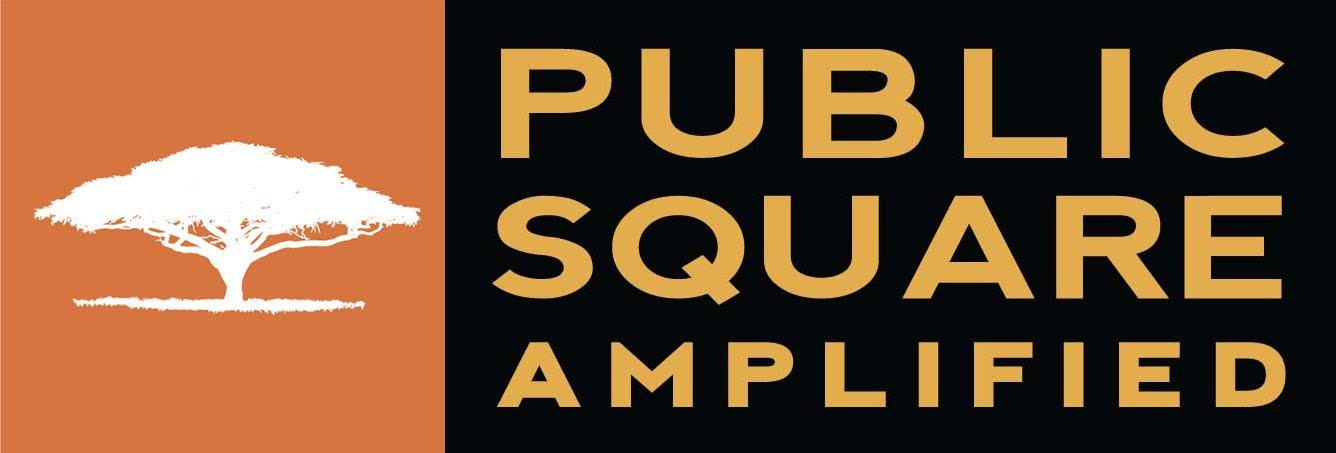Does anyone win when children are bombed?
A family joins a rally in downtown Newark. (Photo by Brian Branch Price for Public Square Amplified)
“The children are always ours, every single one of them, all over the globe; and I am beginning to suspect that whoever is incapable of recognizing this may be incapable of morality. Or, I am saying, in other words, that we, the elders, are the only models children have. What we see in the children is what they have seen in us–or, more accurately perhaps, what they see in us.” - James Baldwin, Notes on the House of Bondage
The blue sky overhead seemed to stretch forever, as any mid-September day often serves up.
The four girls gathered as they usually did, noisy and chaotic but with a stillness and calm that signified their closeness—a bond forged by energy and ease that only the deepest friendships can deliver.
It was another day to chat, preen, and share joy conveyed with a simple word, an effortless gesture, and a knowing look between such close friends. They broke away from other friends and relatives, eager to spend time in their small, close-knit group.
They likely bemoaned how long it was until their next chance to eat as they were always hungry, a common affliction in tweens and early teens stuck in a seemingly constant growth spurt. Maybe they whispered about crushes, taking a few years off their parent's lives, or at least sprouting a few new grey hairs, even if they were out of earshot.
The explosion ripped through the girls and their surroundings so quickly that, counterintuitively, they never heard the bomb that struck them. It may be of little solace that they were killed quickly, definitively, the brutality of the act limiting their suffering: Overwhelming violence bringing finality to their lives in an instant.
The girls had been very alive—in every special and unique way that made them daughters, sisters, classmates, and friends. In the middle of a laugh, a squeezing of a hand, or a smile, their worlds ended, and the world around them forever changed.
September 15 is now indelibly marked as the worst day of their parents's lives. A day their surviving friends may struggle to speak about ever again. For the rest of us, the world moved further off its axis.
A family joins the march for Reparations in downtown Newark (Photo by Josie Gonsalves for Public Square Amplified)
There would never again be a world where that bomb did not murder those girls. The ramifications of that change will play out over months, years, and decades as we trace those lines back to that point in history, that detonator, that spark.
The girls killed that day were: Jana, Lana, Noor, and Fatima. Or maybe they were: Sara, Sama, Tala, and Dima. That's the problem.
In September 2024, American-made bombs dropped from American-built planes killed hundreds of teenage girls in Gaza. Who was killed by which bomb? How many lives were needlessly cut short?
We will likely never understand the full extent of the brutal violence paid for and facilitated by the American taxpayer like me. Each bomb dropped on Palestine is no less American and no less racist than the Klu Klux Klan bomb left by the stairs of a church in Birmingham, Alabama, 61 years earlier. Human rights organizations, governments, and international courts have described those killings using the only words that fit: genocide and other crimes against humanity.
Picture of the 16th Street Baptist Church. (Photo courtesy of Renee Johnston)
The 1963 bombing of the 16th Street Baptist Church might have been initially celebrated or at least condoned as advancing the cause by supporters. Still, history and humanity have universally disowned and disavowed both that violence and any justifications for it. And just as bombing a church in Alabama seems unimaginable and unjustifiable as we look back on it, a year’s worth of bombings and massacres at schools, hospitals, mosques, and churches in Palestine will be something that we can never fully explain to those who didn’t experience it.
But it’s important to remember that while the Klu Klux Klan killed thousands of Black men, women, and children, every single one of those murders was committed by individuals. An individual made every decision to murder in a decades-long campaign of violence; they were individually responsible, individually to blame. There is, unfortunately, no shortage of Palestinian girls killed by individuals hiding behind their military uniforms, just as the KKK members hid behind their white hoods.
Flash forward to today, in Gaza, an individual decided to target someone for death. An individual decided the nearby family, neighbors, or even hostages weren’t important enough to be spared from death. An individual approved the list of targets. An individual decided to pull the trigger. There are many people individually responsible for those girls’ deaths.
We are among them.
(This piece started before the 2025 Ceasefire, but the violence had not stopped even during the Ceasefire; only refocused on the West Bank. Israel continues to murder and slaughter within Gaza. As I’ve written previously, “there is no such thing as a permanent ceasefire -- ceasefires are holding places as we wait for the war to explode again.” A point borne out by Israel’s decision to wholly violate the ceasefire and resume bombing teenage girls in Gaza.)



